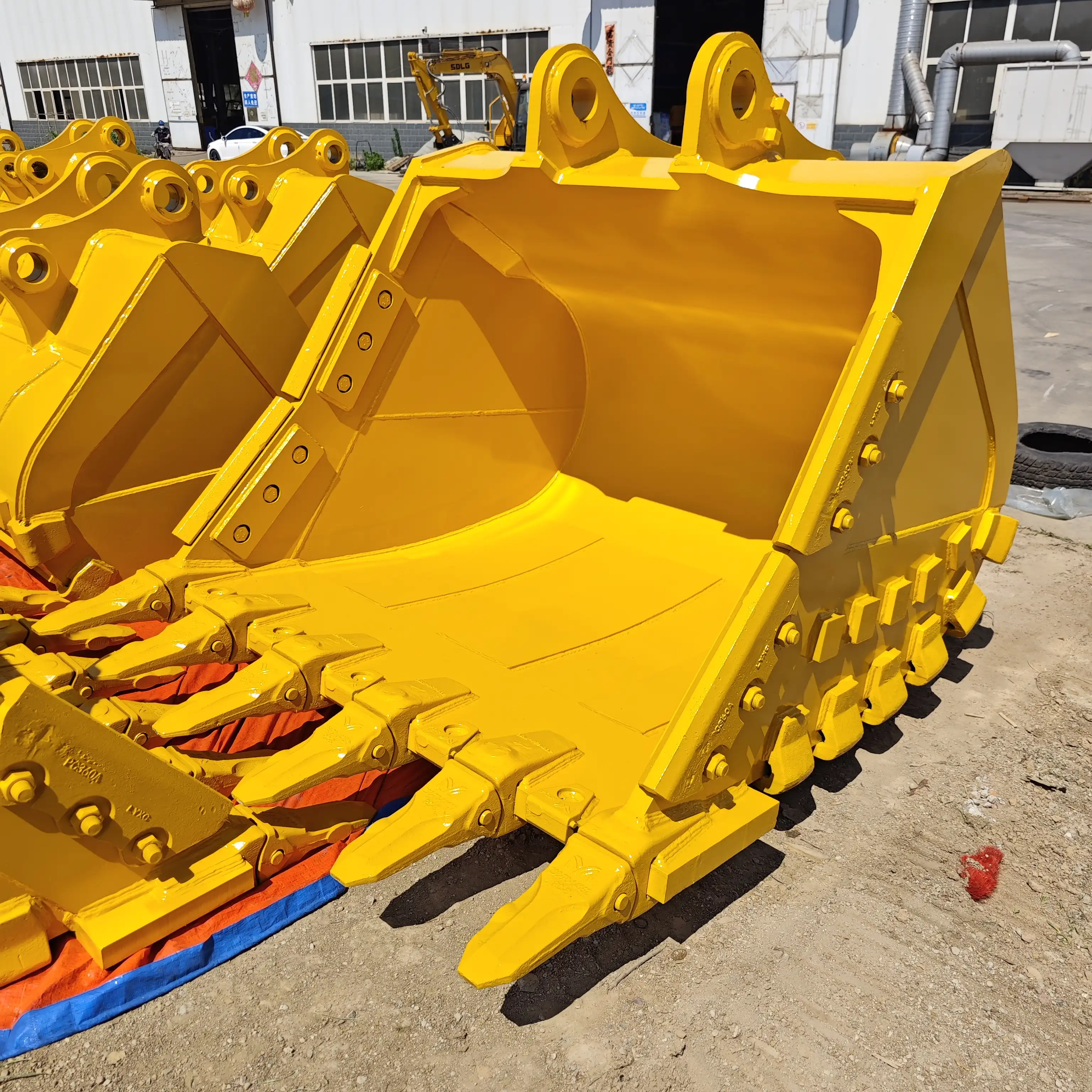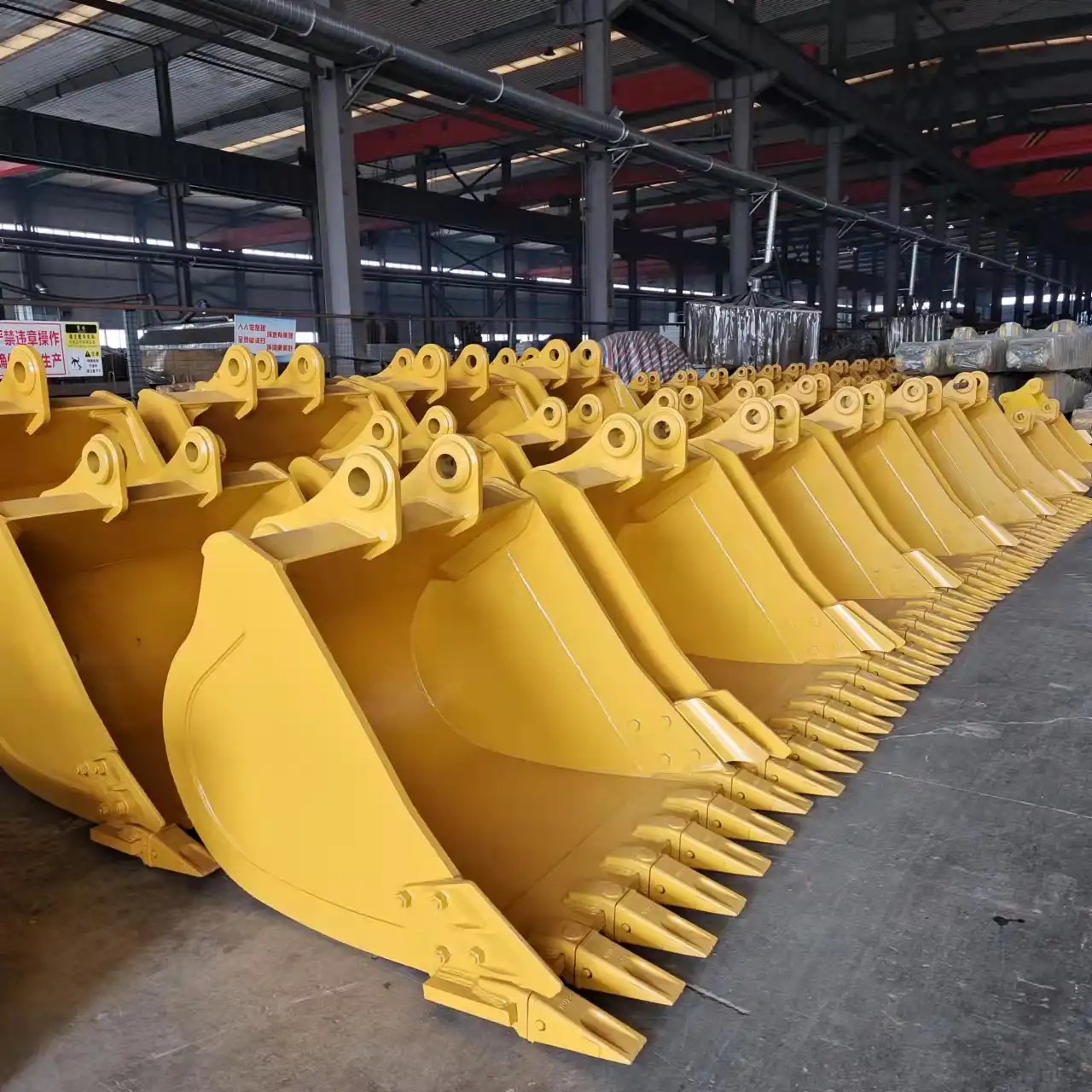What is the life expectancy of an excavator bucket?
The average life expectancy of an excavator bucket typically ranges between 7,000 to 10,000 operating hours in standard working conditions. However, this can vary significantly depending on several factors, including usage intensity, material being excavated, maintenance practices, and bucket quality. When working with highly abrasive materials like rocks or concrete, a bucket might only last 3,000-5,000 hours, while those used primarily in softer soils could extend beyond 12,000 hours. Premium buckets manufactured with high-grade wear-resistant steel, such as those from Tiannuo Machinery, are engineered to withstand harsh conditions longer than standard models. The design features, including reinforced edges and strategic placement of wear plates, also play a crucial role in determining longevity. Regular inspections and proactive maintenance can help maximize your bucket's service life, ensuring you get the best return on investment from this essential excavator attachment.
7,000 and 10,000 Hours: Excavator Bucket Lifespan

Standard Life Expectancy Ranges
The industry benchmark for excavator bucket lifespan typically falls between 7,000 and 10,000 operating hours when used under normal conditions. This estimate serves as a general guideline for most construction and excavation operations. However, it's important to understand that this range represents average performance under moderate usage conditions.
Premium buckets manufactured with high-strength, wear-resistant steel often push toward the upper end of this range or beyond. For example, Tiannuo Machinery's excavator buckets are constructed using specialized high-grade steel that significantly enhances durability and resistance to wear, potentially extending their useful life well beyond standard expectations.
Lifespan Variations by Application
The actual lifespan of an excavator bucket varies dramatically depending on its application:
Light-duty applications (garden landscaping, topsoil removal): 10,000-15,000 hours
Medium-duty applications (general construction, utility work): 7,000-10,000 hours
Heavy-duty applications (mining, demolition, rock excavation): 3,000-5,000 hours
When excavating in highly abrasive environments like quarries or handling materials with high silica content, bucket components wear down much faster. Conversely, buckets primarily used in clay or loam soils typically experience less wear and consequently enjoy longer service lives.
Economic Considerations of Bucket Replacement
Understanding the economic implications of bucket replacement is crucial for equipment managers and business owners. The cost of downtime during replacement, labor for installation, and the price of a new bucket must be weighed against the diminishing performance of an aging bucket.
As buckets wear, they become less efficient, resulting in longer cycle times and increased fuel consumption. This reduced efficiency can create hidden costs that may exceed the price of replacement. Many operators follow a preventive replacement strategy, scheduling new bucket installations before catastrophic failure occurs, thereby minimizing unexpected downtime and maintaining optimal productivity.
Factors Influencing Bucket Lifespan

①Material Quality and Construction
The quality of materials used in manufacturing plays perhaps the most significant role in determining bucket longevity. High-strength, wear-resistant steel significantly outperforms standard steel in challenging conditions. Buckets from premium manufacturers like Tiannuo use specialized alloys developed specifically to resist abrasion and impact damage.
The construction method also matters greatly. Key factors include:
Weld quality and placement: Strategic reinforcement at high-stress points
Heat treatment processes: Enhancing the hardness and durability of the steel
Thickness variability: Using thicker material in high-wear areas
Structural design: Distributing stress evenly across the bucket
Buckets with reinforced cutting edges, wear plates on high-friction surfaces, and properly designed teeth positioning will typically last significantly longer than those without these features.
②Operating Environment Impact
The operating environment has a profound effect on excavator bucket durability. Environmental factors that accelerate wear include:
Material hardness and abrasiveness: Excavating granite or quartzite causes substantially more wear than soft clay
Moisture content: Some materials become more abrasive when wet
Temperature extremes: Freeze-thaw cycles can accelerate metal fatigue
Chemical exposure: Some soils contain corrosive elements that attack metal
Buckets working in marine environments face additional challenges from salt corrosion, while those in chemical plants may encounter substances that accelerate deterioration of both metal and seals.
③Operator Technique and Usage Patterns
Even the best-designed bucket will fail prematurely if used improperly. Operator technique significantly influences bucket lifespan:
Impact loading: Repeatedly dropping the bucket or using it as a hammer drastically reduces lifespan
Overloading: Consistently exceeding recommended capacity places undue stress on components
Improper angle of attack: Attacking material at incorrect angles increases wear on specific areas
Excessive curling force: Applying too much cylinder pressure when curling can strain mounting points
Experienced operators who understand these principles can extend bucket life by 20-30% compared to inexperienced operators simply through improved technique and awareness of bucket limitations.
Maintenance: Extending Your Excavator Bucket's Service Life

①Daily and Weekly Inspection Protocols
Implementing a structured inspection routine is one of the most effective ways to extend bucket lifespan. A comprehensive inspection should include:
Daily Checks:
Visual inspection for cracks, especially at stress points and welds
Checking tooth wear and tightness
Examining adapter condition
Looking for bent or damaged cutting edges
Inspecting mounting brackets and pins for wear
Weekly Inspections:
Thorough cleaning to reveal hidden damage
Measurement of wear on key surfaces
Checking protective wear plates
Inspecting hydraulic connections if applicable
Documenting wear patterns to predict future maintenance needs
Maintaining detailed records of these inspections helps establish wear rates and predict when components will need replacement, allowing for scheduled rather than emergency maintenance.
②Repair Techniques and Replacement Strategies
When wear becomes evident, prompt action can prevent minor issues from developing into catastrophic failures:
Hardfacing: Applying specialized welding material to high-wear areas
Reinforcement plates: Adding additional steel to areas experiencing thinning
Tooth replacement: Changing individual teeth before they wear completely
Edge rebuilding: Restoring cutting edges through welding and grinding
Complete refurbishment: For valuable buckets, complete rebuilding may be economical
Many operators follow the "40% rule" - considering replacement or major refurbishment when a component has lost approximately 40% of its original material, as this represents the tipping point where efficiency losses begin to accelerate rapidly.
③Preventive Measures for Extended Lifespan
Beyond repairs, several preventive strategies can significantly extend bucket life:
Matching bucket type precisely to application: Using purpose-designed buckets for specific materials
Rotation between multiple buckets: Spreading wear across several attachments
Proper storage when not in use: Keeping buckets clean and protected from elements
Application of protective coatings: Some specialized coatings can reduce friction and resist abrasion
Regular cleaning: Removing stuck material prevents unnecessary weight and stress
Some operators also implement strategic rotation of the bucket during operation - subtly changing attack angles to distribute wear more evenly across cutting surfaces rather than concentrating it in one area.
FAQ
①How often should excavator bucket teeth be replaced?
Excavator bucket teeth typically need replacement every 500-1,000 operating hours, depending on material abrasiveness. In extreme conditions like quarrying, they may require replacement as frequently as every 200-300 hours. Regular inspection can help identify when teeth have worn to approximately 50-60% of their original size, which is the optimal replacement point.
②Can you rebuild a worn excavator bucket?
Yes, worn excavator buckets can be rebuilt through several methods including hardfacing, reinforcement plate installation, and complete refurbishment. This process is often cost-effective for larger, more expensive buckets where replacement costs are high. Quality rebuilding can restore a bucket to near-original performance while costing 40-60% less than purchasing new.
③What's the difference between a standard and heavy-duty bucket?
Standard buckets are designed for general excavation in moderate conditions, while heavy-duty buckets feature thicker steel (often 30-50% thicker), additional reinforcement at stress points, more robust cutting edges, and sometimes different geometry to handle abrasive materials. Heavy-duty buckets like those manufactured by Tiannuo Machinery incorporate specialized wear-resistant alloys and strategic reinforcement to extend service life in demanding applications.
④How does bucket size affect lifespan?
Larger buckets generally experience more stress during operation due to heavier loads, potentially reducing lifespan. However, properly sized buckets matched to the excavator's specifications will maintain optimal lifespan. Using oversized buckets on underpowered machines significantly accelerates wear on both the bucket and the excavator, potentially reducing bucket life by 30-40%.
⑤Is it worth investing in premium excavator buckets?
For operations in demanding environments or those prioritizing uptime, premium buckets often deliver superior return on investment despite higher initial costs. Premium buckets typically last 1.5-2.5 times longer than standard options and maintain better performance throughout their service life, resulting in higher productivity and lower operating costs over time.
In conclusion, understanding the factors that influence bucket lifespan allows operators and fleet managers to make informed decisions about purchase, maintenance, and replacement strategies. With proper care and appropriate application, quality buckets can provide reliable service well beyond standard expectations. For more information about premium excavator buckets designed for extended service life in demanding conditions, contact Tiannuo Machinery at boom@stnd-machinery.com.
References
Construction Equipment Maintenance Handbook: Heavy Equipment Lifecycle Management, 2023 Edition
Journal of Construction Engineering: Wear Analysis of Excavation Equipment in Various Operating Environments
International Mining Technology Review: Extending Component Life in Harsh Mining Applications
Heavy Equipment Maintenance: Preventive Strategies for Optimal Performance and Longevity
Construction Materials and Technology: Advancements in Wear-Resistant Alloys for Earth-Moving Equipment
About Author: Arm
Arm is a leading expert in the field of specialized construction and railway maintenance equipment, working at Tiannuo Company. Tiannuo specializes in manufacturing a wide range of products, including railway maintenance equipment like railway sleeper changing machines and screening machines, excavator modification equipment such as excavator lifting cabs, various engineering arms for excavators, excavator accessories like digging buckets, and engineering vehicle auxiliary equipment like loader buckets.

